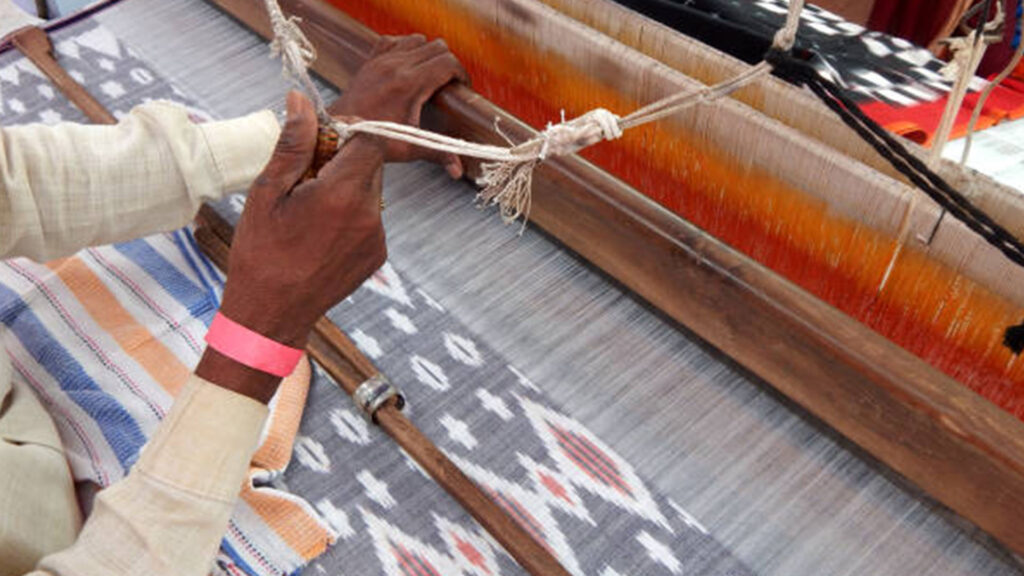
In a world increasingly concerned with environmental impact and ethical practices, the fashion industry has come under scrutiny for its role in pollution and waste. Amid this backdrop, Indian handloom textiles stand out as a beacon of sustainable fashion, blending centuries-old craftsmanship with eco-friendly practices. Let’s explore why Indian handloom is not just a choice but a commitment to a more sustainable and ethical fashion future.
A Rich Tradition of Craftsmanship
Indian handloom textiles have a rich and storied history that dates back thousands of years. This traditional craft encompasses a variety of weaving techniques and materials, each with its own unique characteristics. The skill and artistry involved in handloom weaving are passed down through generations, preserving not just the techniques but also the cultural heritage of the region.
Unlike mass-produced textiles, which often rely on industrial processes and synthetic materials, handloom fabrics are created through time-honored methods. This labor-intensive process ensures that each piece is unique and imbued with the artisan’s personal touch. The slow fashion approach inherent in handloom weaving contrasts sharply with the fast fashion industry’s penchant for quick turnarounds and disposable trends.
Eco-Friendly Materials and Processes
One of the key reasons Indian handloom textiles are considered a sustainable option is their use of natural, biodegradable materials. Commonly used fibers include cotton, silk, wool, and jute—each of which is derived from renewable resources. For instance, cotton, a staple in handloom weaving, is a natural fiber that is both biodegradable and comfortable.
Moreover, handloom weaving often employs traditional dyeing methods using natural dyes derived from plants, minerals, and insects. These natural dyes are less harmful to the environment compared to synthetic dyes, which can contain toxic chemicals and require significant amounts of water and energy to produce. The use of natural dyes also reduces water pollution, a serious issue associated with modern textile production.
Handloom weavers often utilize local materials and resources, minimizing the need for long-distance transportation. This not only reduces the carbon footprint associated with the production of textiles but also supports local economies. The use of local materials helps to preserve traditional agriculture and crafts, further enhancing the sustainability of the handloom industry.
Minimizing Waste and Reducing Environmental Impact
The handloom weaving process is inherently more sustainable due to its minimal waste production. Unlike industrial textile manufacturing, which generates large amounts of waste due to cutting and mass production, handloom weaving is characterized by its efficient use of materials. The weavers can create intricate patterns and designs with precision, ensuring that every scrap of fabric is utilized.
Furthermore, handloom textiles are often designed to be timeless rather than trendy. This timeless quality means that these fabrics can be cherished and worn over many years, reducing the need for frequent replacements. In contrast, fast fashion promotes a cycle of constant consumption and disposal, contributing to massive textile waste and environmental degradation.
Ethical and Fair Trade Practices
The handloom industry also stands out for its commitment to ethical labor practices. Many handloom weavers work in small, family-run workshops or cooperatives where fair wages and working conditions are prioritized. This contrasts with the often exploitative labor practices found in the fast fashion industry, where workers are frequently subjected to poor working conditions and low pay.
By supporting handloom textiles, consumers are not only choosing eco-friendly products but also contributing to the welfare of artisans and their communities. Fair trade practices ensure that the weavers receive a fair share of the proceeds from their work, promoting economic stability and social equity.
Celebrating Diversity and Innovation
Indian handloom textiles are incredibly diverse, reflecting the rich cultural heritage of the country. Each region has its own distinctive weaving techniques, patterns, and motifs, contributing to a vibrant tapestry of traditional and contemporary designs. This diversity allows consumers to choose from a wide range of fabrics, each with its own story and significance.
Moreover, the handloom industry is continually evolving, with artisans and designers experimenting with new techniques and incorporating modern elements into traditional designs. This innovation keeps handloom textiles relevant and exciting while maintaining their commitment to sustainability and ethical practices.
Conclusion
Indian handloom textiles represent more than just a fashion choice; they embody a commitment to sustainability, ethical labor practices, and cultural preservation. By choosing handloom fabrics, consumers are supporting a time-honored craft that respects both the environment and the artisans who create it. In a world where the impact of fashion on the planet is increasingly scrutinized, Indian handloom stands as a shining example of how tradition and innovation can come together to weave a greener future.
As we navigate the complexities of modern fashion, embracing handloom textiles offers a tangible way to make a positive difference. By investing in these beautiful, sustainable fabrics, we not only honor the rich heritage of Indian weaving but also contribute to a more ethical and eco-friendly fashion industry.
